In this tutorial you will learn how to set up a symmetric model using the Extrusion Wizard. If the model satisfies the prerequisites, then symmetry plane boundary conditions are automatically created by the Extrusion Wizard. These prerequisites are:
| • | Billet cross-section is circular and the shape is cylindrical |
| • | Center of billet is at X=0 and Y=0 |
| • | Solids in the model should have only the symmetric part (and not the whole model) |
Since the billet cross-section is circular, by comparing the area of the billet solid with the corresponding cross-section of a full billet, the wizard automatically determines the planes of symmetry in the model. Hence, no additional user input is required.
The model files for this tutorial are located in the file mfs-1.zip in the subdirectory \hx\MetalExtrusion\HX_0104. See Accessing Model Files.
To work on this tutorial, it is recommended that you copy this folder to your local hard drive where you store your HyperXtrude data, for example, “C:\Users\HyperXtrude\” on a Windows machine. This will enable you to edit and modify these files without affecting the original data. In addition, it is best to keep the data on a local disk attached to the machine to improve the I/O performance of the software.
| 1. | From the Start menu select: All Programs > Altair > HyperXtrude to launch the HyperXtrude user interface. The User Profiles dialog appears with Manufacturing Solutions as the default application. |
| 2. | Select HyperXtrude and Metal Extrusion. |
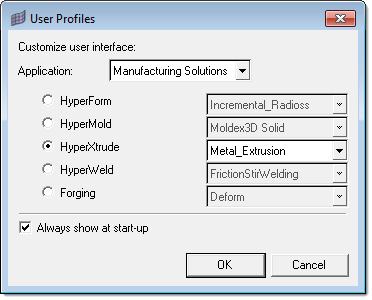
|
| 1. | From the File menu, select Open.... |
| 2. | Browse to the file HX_0104.hm and click Open. |
This model is solid geometry which consists of the Billet, Pocket1 and Bearing components. This model can meshed with two planes for symmetry (thus modeling only a pie shape). However, in this example you will model it with one plane of symmetry (YZ plane). Hence, solids are created only for one half of the model as shown in the image below. There are shared surfaces between Billet - Pocket1 and Pocket1 - Bearing so you do not have to create shared surfaces. This can be verified by selecting Solids panel from the main menu. While in the Solids panel, you can see these shared surfaces.
| 3. | Click return to close the Solids panel. |
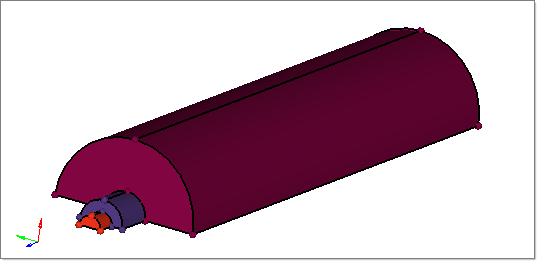
|
| 1. | On the Utility menu, click Extrusion Wizard. |
Depending on how you have loaded the model, the Project Browser may prompt you for additional action. (see HX-0004 for details)
| 2. | In the Extrusion Wizard, click the Set Model Units checkbox. |
Note: Measure dimensions of the model (ex: diameter of the billet) by pressing F4 button on the key board. Find the distance between any two nodes lying diagonally opposite to each other on the circumference of the billet. The numerical value of this distance (the diameter of the billet) gives us an idea about the unit system in which the model is created.
In the model, billet diameter is about 6.5. Hence, it is reasonable to conclude that the length unit of the model is ‘inches’. (6.5 mm diameter billets are practically not used in extrusion).
| 3. | Set the Unit System to British. Click OK. |
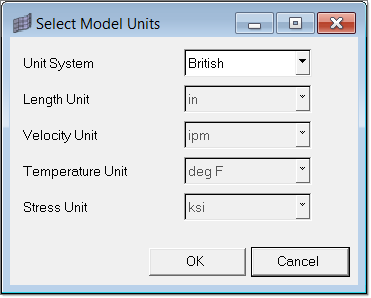
|
| 1. | Click the Set Analysis Requirements checkbox. The Process Data dialog opens. |
| 2. | Set the options as shown in the image below and click Next. |
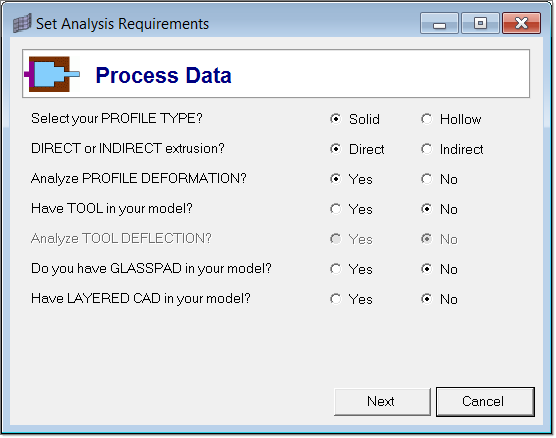
| 3. | Set the options for Analysis Data as shown in the image below and click Next. |
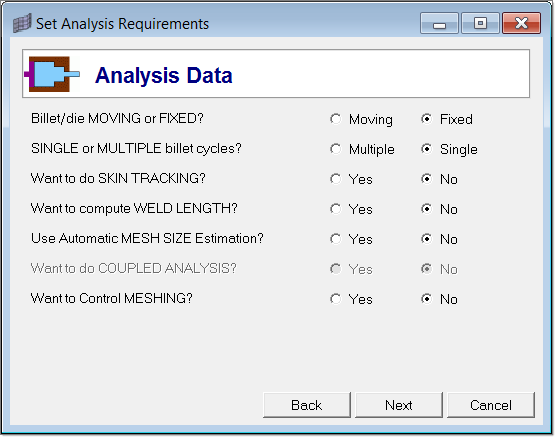
| 4. | In the Select Extrusion Components window, notice that Billet, Bearing Cavity and Profile are recognized and pre-selected. |
| 5. | Select Pocket1 and click OK. |
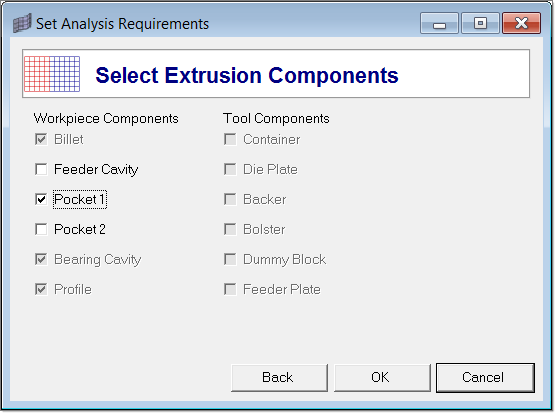
In the Extrusion Wizard, you will skip the Select Press Data step as this model does not contain Press information.
|
| 1. | Click Select Material Data. |
| 2. | Expand Workpiece, then expand Aluminum_Alloys and expand 1000_Series. |
| 3. | Select AA1050 and click Add to add the material under Selected Materials. |
You do not need to assign a material in the Extrusion Wizard. The selected material will be assigned to the workpiece automatically.
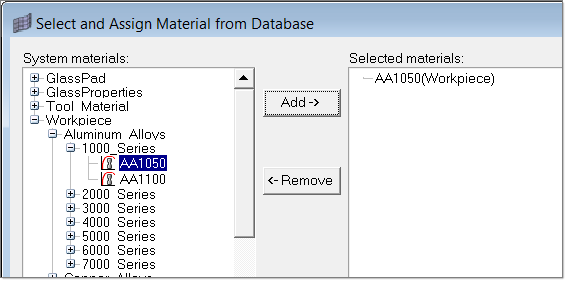
|
| 1. | Click Generate Workpiece Mesh. Notice that the Extrusion Wizard already picked the components for Billet, Pocket1, and Bearing. |
| 2. | Input the size of the elements as shown below. |
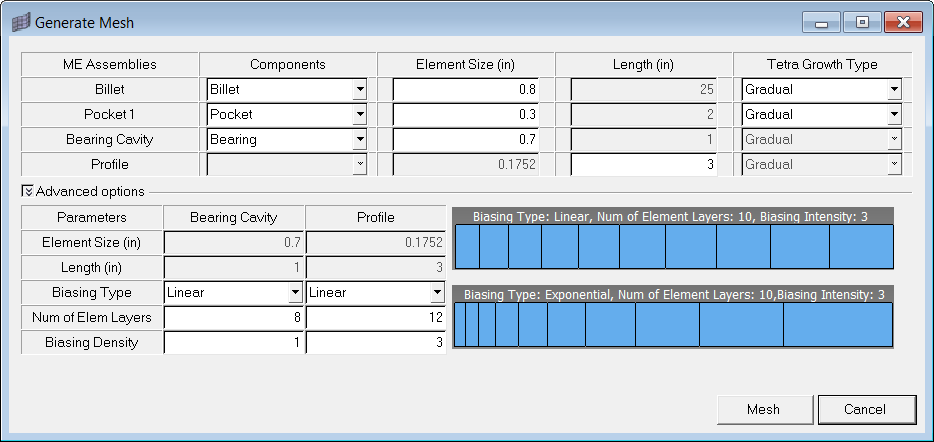
| 4. | After the mesh is created, click OK to close the dialog. Verify in the Model browser that four more components are created - Bearing3D, Billet3D, Pocket13D, and Profile3D. |
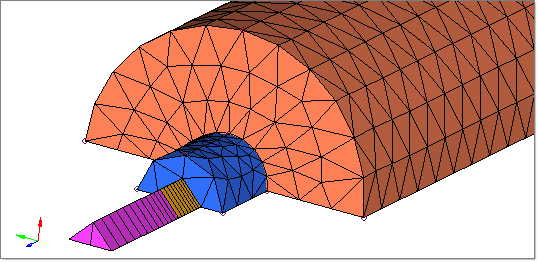
| 5. | Click on the Extrusion tab to return to the Extrusion Wizard. |
|
| 1. | Click Generate Workpiece BCs and accept the default parameters in the dialog that appears. |
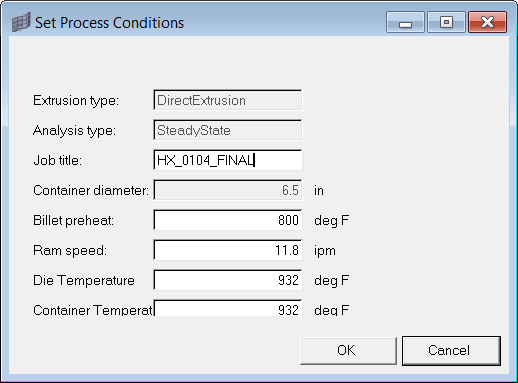
| 2. | Click OK. This will create BC faces and associated load cards for all the 3D collectors. Since the is a Billet half sector, it creates SymmetryPlane1 BC along the Z axis. |
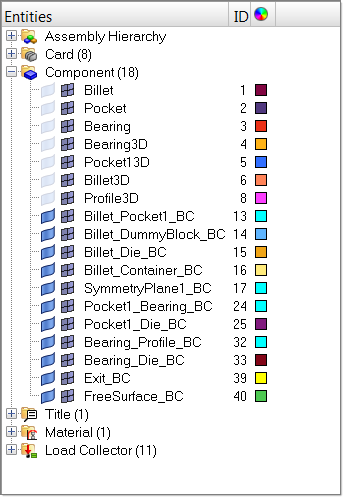
|
| 1. | On the Utility menu, click Parameters to display the Define Altair HyperXtrude Analysis Parameters dialog. |
| 2. | Set the footer data in the User Commands tab as shown in the image below. This will help you invoke the solver in both interactive and batch mode. |
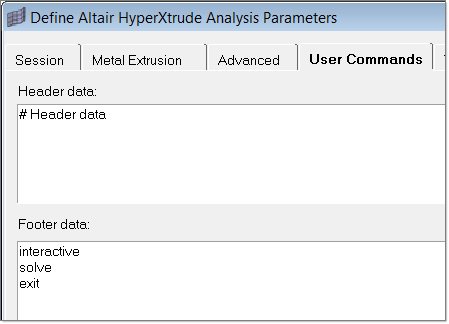
| 3. | Click Update and Close. |
|
| 1. | Click File > Save As and save the file as HX_0104_FINAL.hm. |
| 2. | In the Extrusion Wizard, click on Save and Export the Model. |
| 3. | Set the Model type field to Three Dimensional. |
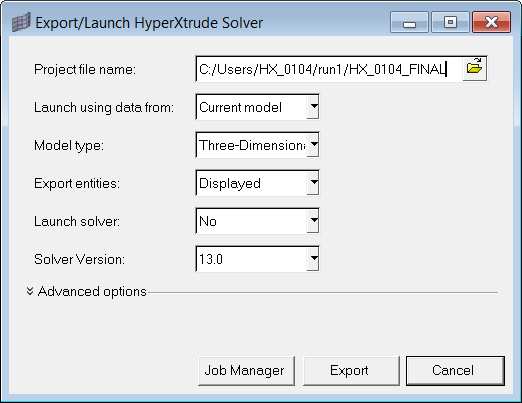
| 4. | Click on Export to generate the files HX_0104_FINAL.grf and HX_0104_FINAL.hx. |
| Note: | To launch the solver interactively, set the Launch solver option to Interactive, and then export. Alternatively, you can set the Launch solver field to No and submit the job on e-compute. |
|
Return to Metal Extrusion Tutorials







